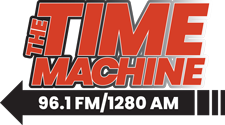In his latest speech, the Federal Reserve chair sought to reassure investors that inflation is still moving in the right direction, while hinting at a slowdown in the pace of rate cuts. He emphasized a solid labor market that is no longer a significant source of concern – a notable shift from the tone following the central bank’s September rate cuts. The shift in Fed policy expectations has already caused borrowing costs to move higher.
The latest inflation report, however, paints a more stubborn picture. While inflation made a dramatic comeback in the 1970s, this time might be different. Rising productivity could help mitigate inflationary pressures, as sustained improvements in productivity can restrain price growth.
A temporary bump or a warning sign?
Last week, the consumer price index (CPI) and producer price index (PPI) suggested that disinflation has nearly stalled. According to the CPI, headline inflation accelerated to 2.9% on an annualized basis, up from 2.2% in September. The three-month annualized percentage change rose to 2.4%, compared to 2.1% a month ago and 0.4% in July, with much of the downward pressure driven by falling energy prices. Core inflation followed a similar trend, with the three-month percentage change increasing from 1.6% in July to 3.5% last month.
Higher inflation erodes the value of future consumption. Interest rates must rise to sufficiently compensate lenders for a decline in their future purchasing power. Since the September lows, the yield on the benchmark 10-year Treasury increased by nearly 76 basis points. Mortgage rates also increased roughly 90 basis points during that same period.
Although wages are now growing faster than prices, food prices and asking rents have surged nearly 85% and 33%, respectively, compared to pre-pandemic levels. In contrast, average hourly earnings have risen just 25% over the same period. This disparity underscores why inflation remains a deeply unpopular issue for Americans. Elevated inflation and borrowing costs squeeze household budgets, disproportionately impacting Main Street.
Adding to the uncertainty, the latest inflation readings coincide with the first 100 days of a Trump presidency, whose campaign rhetoric signaled the potential for higher inflation.
A silver lining?
On a positive note, productivity gains have shown some persistence. By reducing unit labor costs, higher productivity allows wages to grow faster than prices, enhancing workers’ and consumers’ purchasing power. Employers can produce more with less, avoiding significant cost increases that would otherwise be passed on to consumers.
The new leadership in Washington, D.C., has an opportunity to foster a pro-growth environment. By improving regulations, promoting AI readiness and adoption, addressing barriers to new housing construction, and tackling the nation’s fiscal imbalance, policymakers can boost productivity, temper inflationary pressures, and keep the economy on a sustainable growth trajectory.
Elsewhere in the economy
Homebuilder confidence is expected to fall and remain in contraction territory. Housing starts are also expected to fall. Rising mortgage rates may have caused housing demand to cool somewhat. However, the increase in mortgage rates comes at a time where housing activity usually dips due to seasonal factors, before rebounding at the start of the year.






